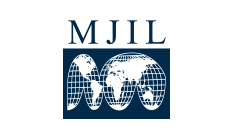Abstract
The GATT system was established by a fairly homogeneous group of 24 countries in the late 1940s. With the exception of the U.S., the signatory nations were, for the most part, European or British Commonwealth countries with market economies. These governments shared a rough consensus on the fundamental goals of an international trading system. They intended to avoid the economic warfare that had characterized international trade in the late 1930s. Trading relationships were to be governed by a mutual commitment to commonly understood notions of fairness and equity. This meant allowing producing enterprises to compete, according to a set of agreed rules, without national government interference intended to affect the competitive outcome. Disputes were to be resolved by reference to the basic equitable principles shared by the signatories. The signatories believed that the system would ultimately benefit all participants by permitting producing enterprises to exploit their comparative advantages and thus optimize the use of the world's resources and maximize the total output of goods and services available to meet mankind's needs.
Recommended Citation
Thomas R. Howell & R. M. Gadbaw,
The U.S. Commitment to the GATT System: A Reappraisal of Basic Assumptions,
6
Mich. J. Int'l L.
491
(1984).
Available at:
https://repository.law.umich.edu/mjil/vol6/iss1/24

